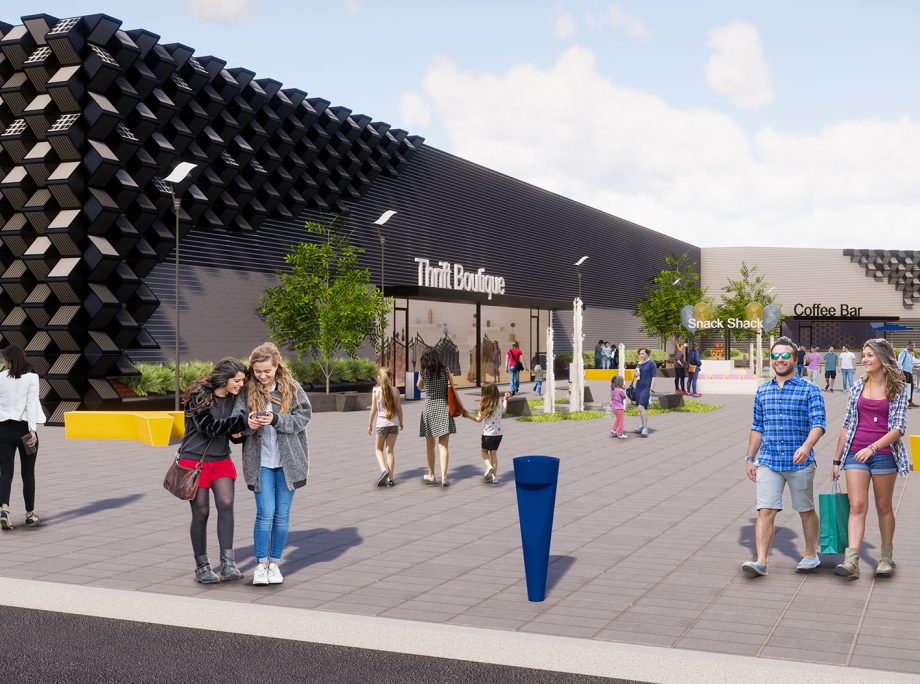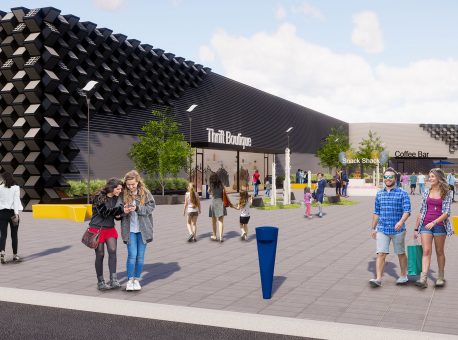David Senden & Re-Habit – Housing Isn’t the Key to the Homeless Crisis
GlobeSt.com
August 24, 2018
The rush to solve the homeless crisis in Southern California is real—and real estate experts are coming at the complicated and multi-layered problem from every angle. Lately, there have been a surge of ideas to provide more transitional housing options, but maybe merely housing the homeless isn’t the right approach. KTGY Architecture + Planning has unveiled a Re-Habit concept that aims to reduce the homeless population to become more self sustaining. Re-Habit converts obsolete big box retail into homeless support centers that provide programing and aid for the homeless.
“We have been asked to renovate big box retail concepts, and we thought that would be a fantastic opportunity to create a new concept regarding homelessness,” David Senden, a principal at KTGY, tells GlobeSt.com. “We talked to some people at the Long Beach Rescue Mission, and it developed into a conversation about programming rather than housing. If we keep thinking about homelessness as a housing problem, I think we are missing the point. A big reason for homelessness is not because people can’t find housing but because of other issues that have led them into homelessness.”
KTGY’s vision is to create a long-term program—which Senden described as one- to two-years long—to provide treatment, counseling and other services, like job training. As the individual moves through the program, they will move into leadership positions, as counselors, for example, that will help them transition back into mainstream society. “We thought of this as a way for people that are sick or have a problem to work through a program to be self-sustaining and well,” says Senden. “There is a lot of substance abuse and mental illness in the homeless population, and this concept provides a way to establish independence as people move through the program.”
Using existing obsolete retail real estate has several benefits. First, it already exists and is in need of an alternative use. Malls are also outside of urban cores, which would prove useful to helping transition residents with substance abuse problems. “The biggest population of chronically homeless people is urban centers, they are back in the same community that caused issues in the first place,” adds Senden. “If there was a way to transport people to more suburban locations for treatment, then when they exited, they would be in a community that was different than the one they just left. Hopefully that would provide more of a support system for success in the long run.”
Malls have been transitioned into many alternative uses. For malls that have been redeveloped into alternative, non-retail uses, Senden says the Re-Habit concept will fit into portion of the property. “We are doing other things with malls lately. They have been converted into health and wellness centers, and we think that would be a good adjunct to a homeless center,” he explains. “Instead of retail, there are other ways to use the space. I don’t think that is a solution that gets tact onto a mall that is functioning as a mall, but it could be a bigger solution to outdated mall concepts.” In other instances, the city could buy the site or it can be donated in someway be the owner.
Homelessness is a complicated issue that will likely require many different methods to address the many different causes of why and how people find themselves on the street. “There are countless ways that people have tried to design solutions, be few people get to the root cause of this,” says Senden. “It isn’t all substance abuse and mental illness, but that is the visible part and it is the one that we were focusing on. It is a complicated issue, and we barely scratched the surface. This was us throwing our hat in the ring.”



